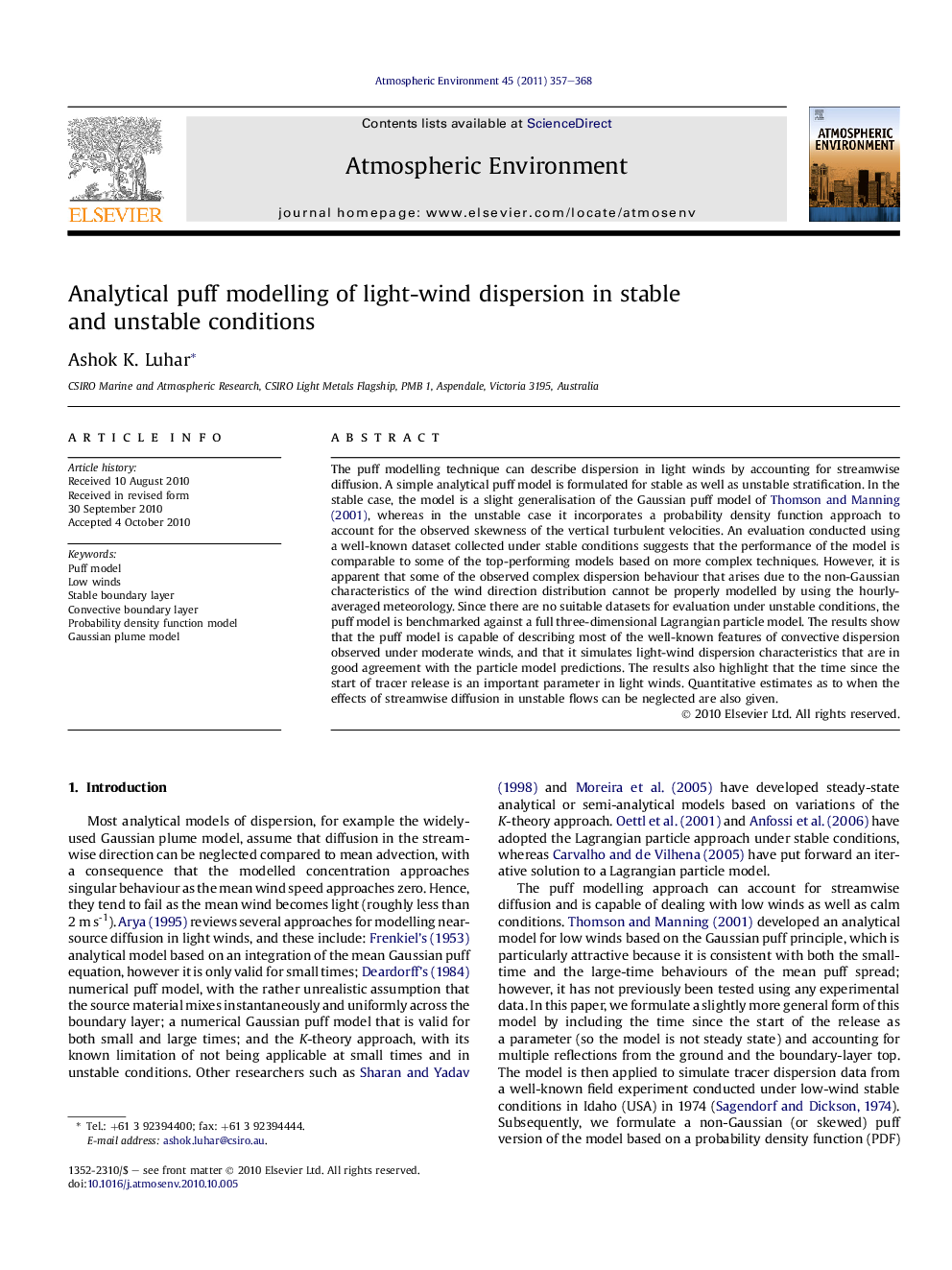| کد مقاله | کد نشریه | سال انتشار | مقاله انگلیسی | نسخه تمام متن |
|---|---|---|---|---|
| 4440173 | 1311050 | 2011 | 12 صفحه PDF | دانلود رایگان |

The puff modelling technique can describe dispersion in light winds by accounting for streamwise diffusion. A simple analytical puff model is formulated for stable as well as unstable stratification. In the stable case, the model is a slight generalisation of the Gaussian puff model of Thomson and Manning (2001), whereas in the unstable case it incorporates a probability density function approach to account for the observed skewness of the vertical turbulent velocities. An evaluation conducted using a well-known dataset collected under stable conditions suggests that the performance of the model is comparable to some of the top-performing models based on more complex techniques. However, it is apparent that some of the observed complex dispersion behaviour that arises due to the non-Gaussian characteristics of the wind direction distribution cannot be properly modelled by using the hourly-averaged meteorology. Since there are no suitable datasets for evaluation under unstable conditions, the puff model is benchmarked against a full three-dimensional Lagrangian particle model. The results show that the puff model is capable of describing most of the well-known features of convective dispersion observed under moderate winds, and that it simulates light-wind dispersion characteristics that are in good agreement with the particle model predictions. The results also highlight that the time since the start of tracer release is an important parameter in light winds. Quantitative estimates as to when the effects of streamwise diffusion in unstable flows can be neglected are also given.
Research highlights
► The new model is comparable to the Gaussian plume model in its simplicity.
► It accounts for the vertical diffusion asymmetry in unstable conditions.
► The model performance is very similar to more complex, numerical models.
► The time since the start of emission is an important parameter in weak winds; hence the assumption of steady state in many models may be a serious problem.
► Quantitative estimates as to when the effects of streamwise diffusion can be neglected are given.
Journal: Atmospheric Environment - Volume 45, Issue 2, January 2011, Pages 357–368